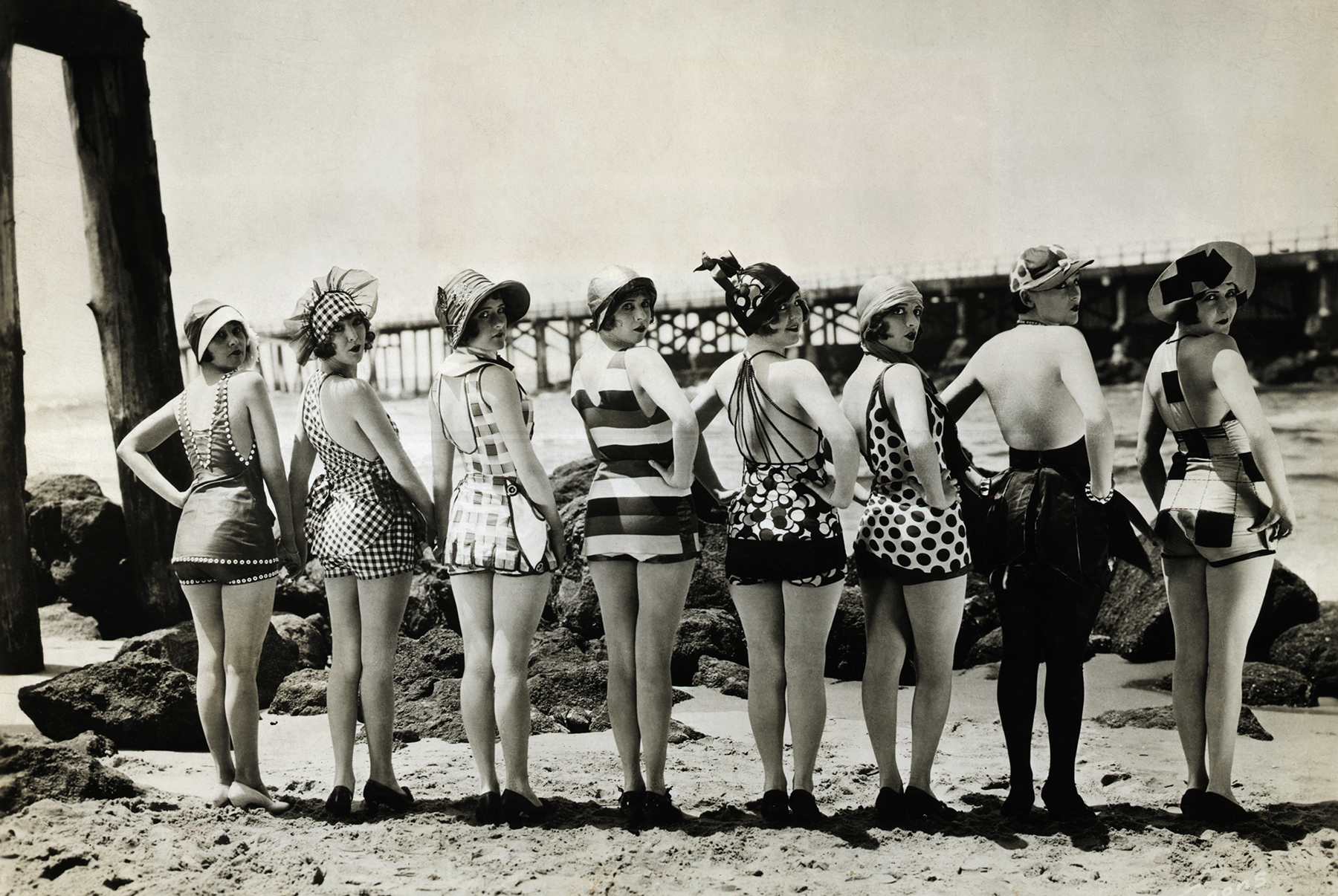
- Industry
Forgotten Hollywood: Mack Sennett’s “Bathing Beauties”
In his autobiography “King of Comedy,” Mack Sennett writes about how he came up with the idea of his famous ‘Bathing Beauties’ in 1914. “One morning as I went through the Times, I noticed a three-column picture on Page One of a pretty girl who had been involved in a minor traffic accident. The picture made the front page for two obvious and attractive reasons. The young lady’s knees were showing … I called in the staff. ‘Boys, take a look at this. This is how to get our pictures in the papers. Go hire some girls, any girls, so long as they’re pretty. Especially around the knees … Get those kids on the screen,’ I told our people. ‘Sure, I know they can’t act, but they don’t have to act. Put them in bathing suits and just have them around to be looked at while the comics are making funny.’”
Sennett was famous for his Keystone comedies which were one and two-reel comic silent films with comedians he made famous, such as Fatty Arbuckle, Charlie Chaplin, Harry Langdon, Buster Keaton and Harold Lloyd. Physical comedy, especially slapstick, compensated for the lack of dialogue, and Sennett had set up his own studio to churn out his films to great success. But as more and more filmmakers copied his style, he had to come up with a way to distinguish his films, and the idea of posing a pretty girl in a bathing suit next to his stars, especially in publicity materials, took off like a rocket. Especially because of those knees.
Then Sennett put groups of them together for publicity shots without the comedians as the girls became famous in their own right, now known as Mack Sennett’s Bathing Beauties. The bathing suits evolved. They had started out wearing bloomers and tunics with boots, or stockings and shoes, but the knees remained exposed. The girls were all sizes from plump to skinny, but all of them conveyed a joie de vivre that was completely winning. In the beginning, in the 1910s, the prevailing swimsuits covered women up completely, so these costumes were considered risqué. As time went on, the hemlines got higher, the girls got slimmer, sporting hats and caps, with frills and furbelows on their suits, but still with the stockings and shoes. But the sense of fun and hijinks remained intact.
Mabel Normand, who was Sennett’s first star, had appeared in 1912’s The Water Nymph and was advertised this way by the Keystone Film Company: “A humorous character subject and a laughing seaside comedy featuring Mabel Normand in graceful diving feats.” A smiling Normand was posed in the accompanying bathing suit photo. Her stint as a Bathing Beauty certainly furthered her career.
Sennett made more stars from the Beauties, though most of the hundreds of hopefuls that tried to start careers that way remain anonymous. Starting with the three original girls – Evelyn Lynn, Cecile Evans and Marie Prevost – Sennett discovered Carole Lombard, Phillis Haver, Virginia Fox (who later married Daryl F. Zanuck), Marie Dressler, Kathryn McGuire and Gloria Swanson among others. Swanson never referred to herself as a Bathing Beauty though she appeared in the Keystone films in her bathing suit several times; in her first two films she was billed as “The Girl.” (She became the biggest silent star at Paramount for a time, earning $20,000 a week.)
In 1917, when Sennett joined Paramount Pictures, the Bathing Beauties made their debut in Hula Hula Land to great outrage from the morality police and much applause from the audience. So Sennett started putting them in all his films. No matter the plot, a bevy of his girls cavorted, ran, played or did all of those things on a beach in a scene or two. In the book “Mack Sennett’s Fun Factory,” author Brent Walker describes them this way: “Their fun-loving, carefree antics in scanty bathing suits tweaked the noses of those viewers not prepared to dive headlong into the hedonistic Roaring Twenties just around the corner.”
The Bathing Beauties also turned up at the Venice Beach beauty contests called ‘bathing girls parades’ with several winning prizes and posing for photographs. The girls then expanded their personal appearances by touring around the country with ‘revues’ that involved dancing in their bathing suits. Their photos appeared in newspapers, theater lobby cards and fan magazines, one besotted writer writing “Mack Sennett has every male movieite in the U.S. raving over his bunch of bathing beauties. No wonder the population of Los Angeles is increasing!” One went as far as to compare them to the Ziegfeld girls of the stage.
A copy of Mack Sennett Weekly, Sennett’s newsletter from 1919 is on eBay, headlined with a feature on his upcoming film Among Those Present. Below that is a story on the Bathing Beauties that appear in the film entitled “Girls That Are Lovely.” The 4-page publication sold for 5¢ and was immensely popular.
The Bathing Beauties were so successful that rival studios created their own – Fox had the ‘Sunshine Girls’ (Janet Gaynor was one of them), Hal Roach had the ‘Bathing Girls,’ and Christie Studios copied the name ‘Bathing Beauties.’ But none had the same cachet as Sennett’s girls.
By 1928, the Bathing Beauties fell out of favor as their novelty wore off. Perhaps the audiences grew more sophisticated and the swimsuits were no longer shocking, and Sennett stopped featuring them in his movies. But they remain an important part of movie history and will be forever linked to the impresario who created them.

